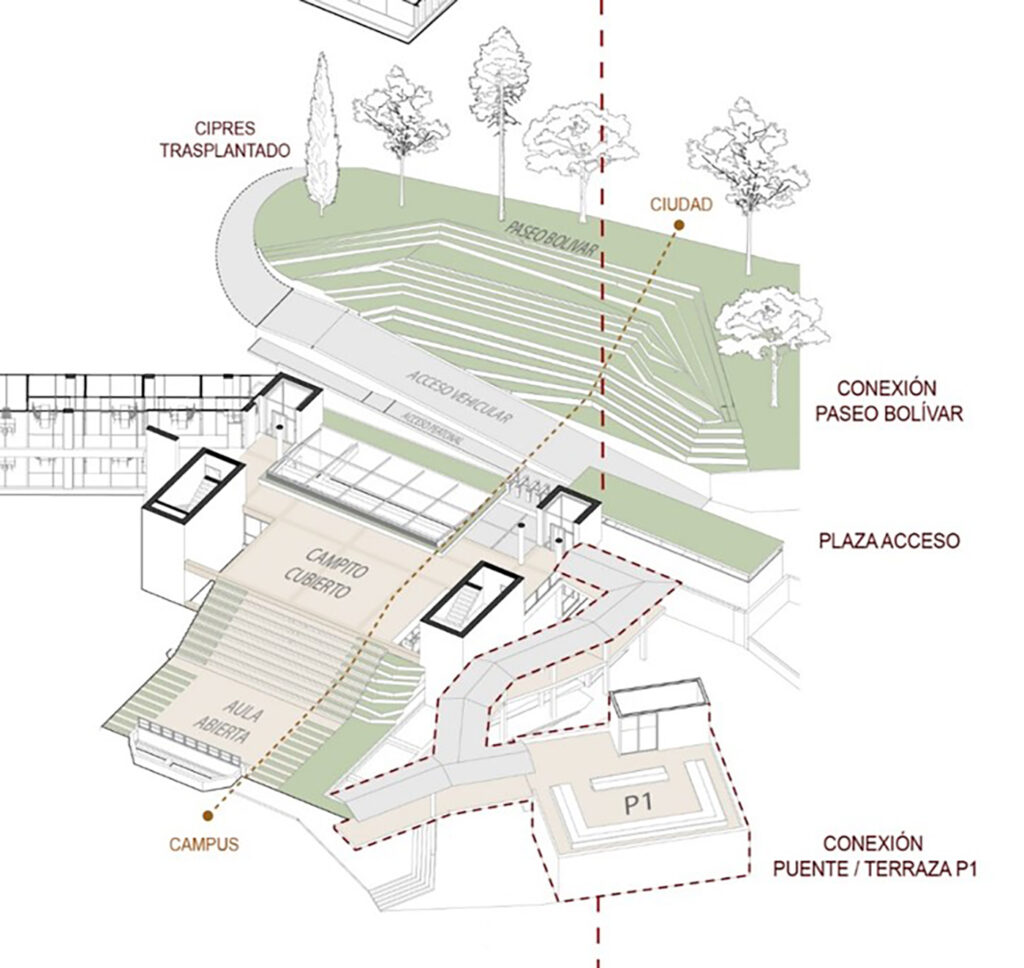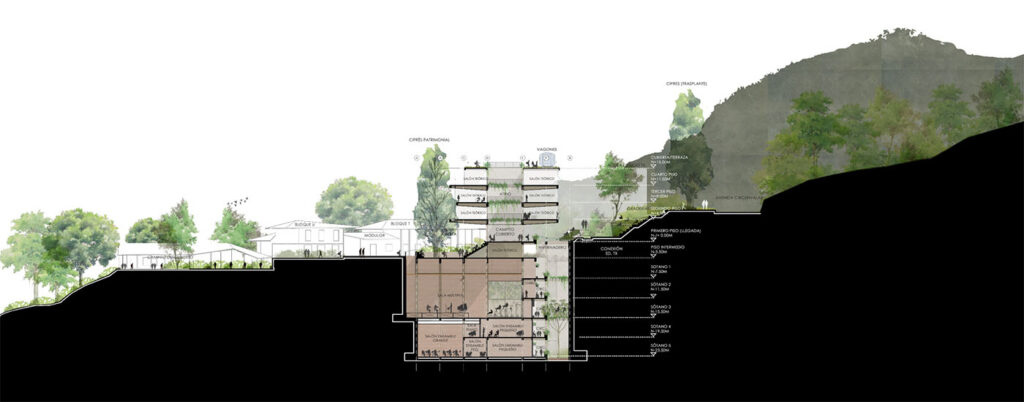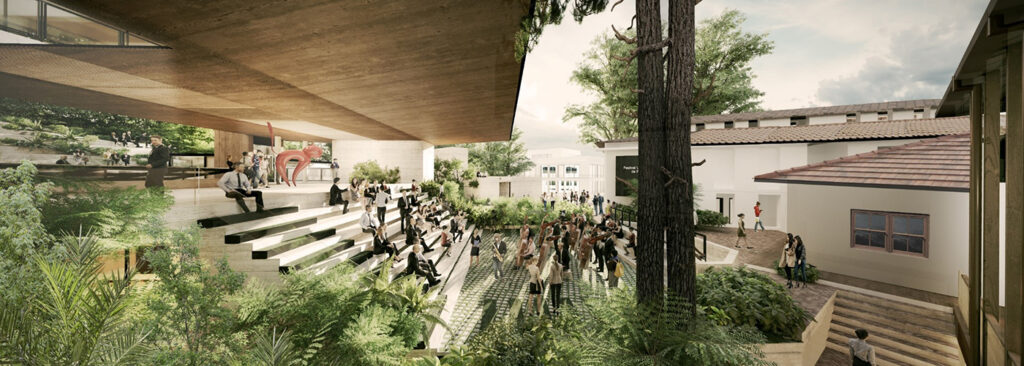The building serves as a link between the city and the campus, acting as an intermediate space to foster encounters among different stakeholders, music, landscape, and urban life. This approach aims to integrate spaces that create transitions between interiors and exteriors, allowing pedagogical activities to become part of the natural environment. The project positions itself as the first step in the Bolívar Promenade, connecting the campus with the city through culture.

The academic proposal aims to open spaces for diversity, dialogue, and creation around heritage and nature, generating encounters and synergies between different worlds. Intermediate spaces are used to create meeting places that also allow isolating noise and ensuring privacy, articulating the principles of the campus in the project.

The building ensemble aims to harmonize different present and future conditions to achieve comfort and rhythm. Regulated by a system of spaces, it acts as a transition between opposites, facilitating user circulation and maintaining the human scale of the place. The project creates an active and pedagogical edge that connects university life with the city and the natural environment, promoting co-creation and dialogue with the campus history.
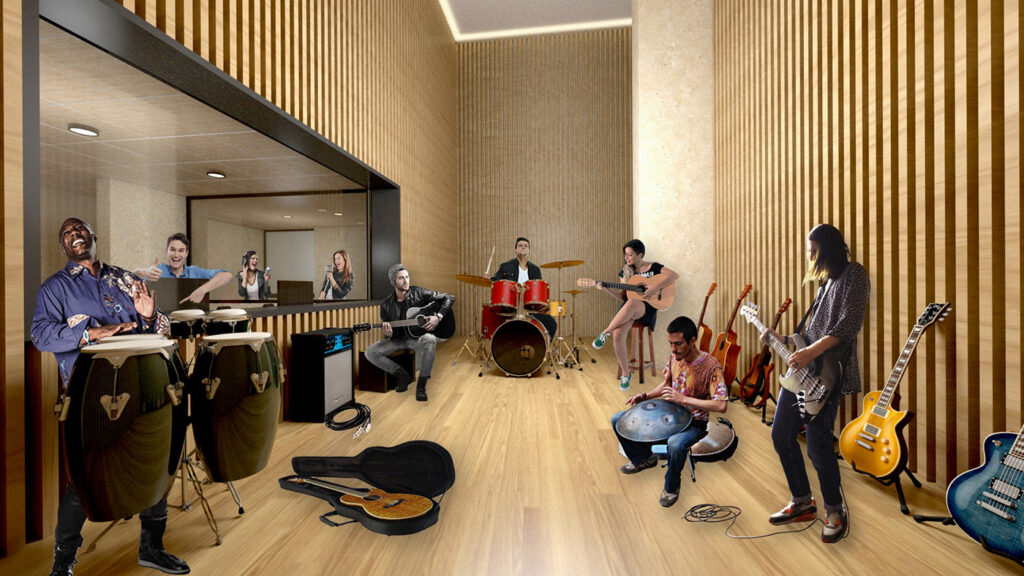
The building is composed of three types of landscapes that organize different spaces. In the sky, there are spaces for classes and collaborative work with panoramic views. On the ground, there is a meeting space between the city and the campus, protected but connected with the surroundings. In the underground, there are the specialized spaces of the music program, shielded from the environment to ensure the necessary intimacy and silence.
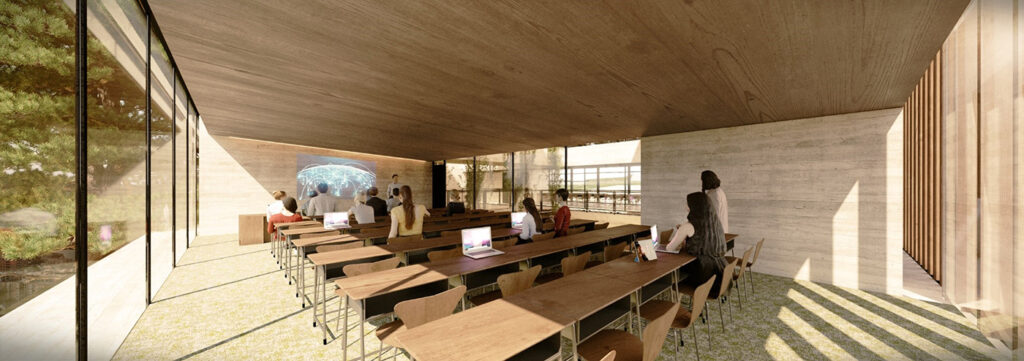
The technique used aims to create a pedagogical landscape that facilitates the connection between different worlds. The decision to bury the program aims to maintain the scale of the place and respect the environment, generating an open space for the university community and the city.
